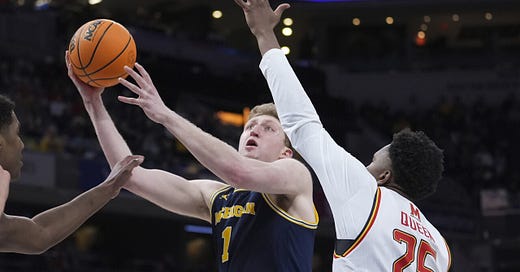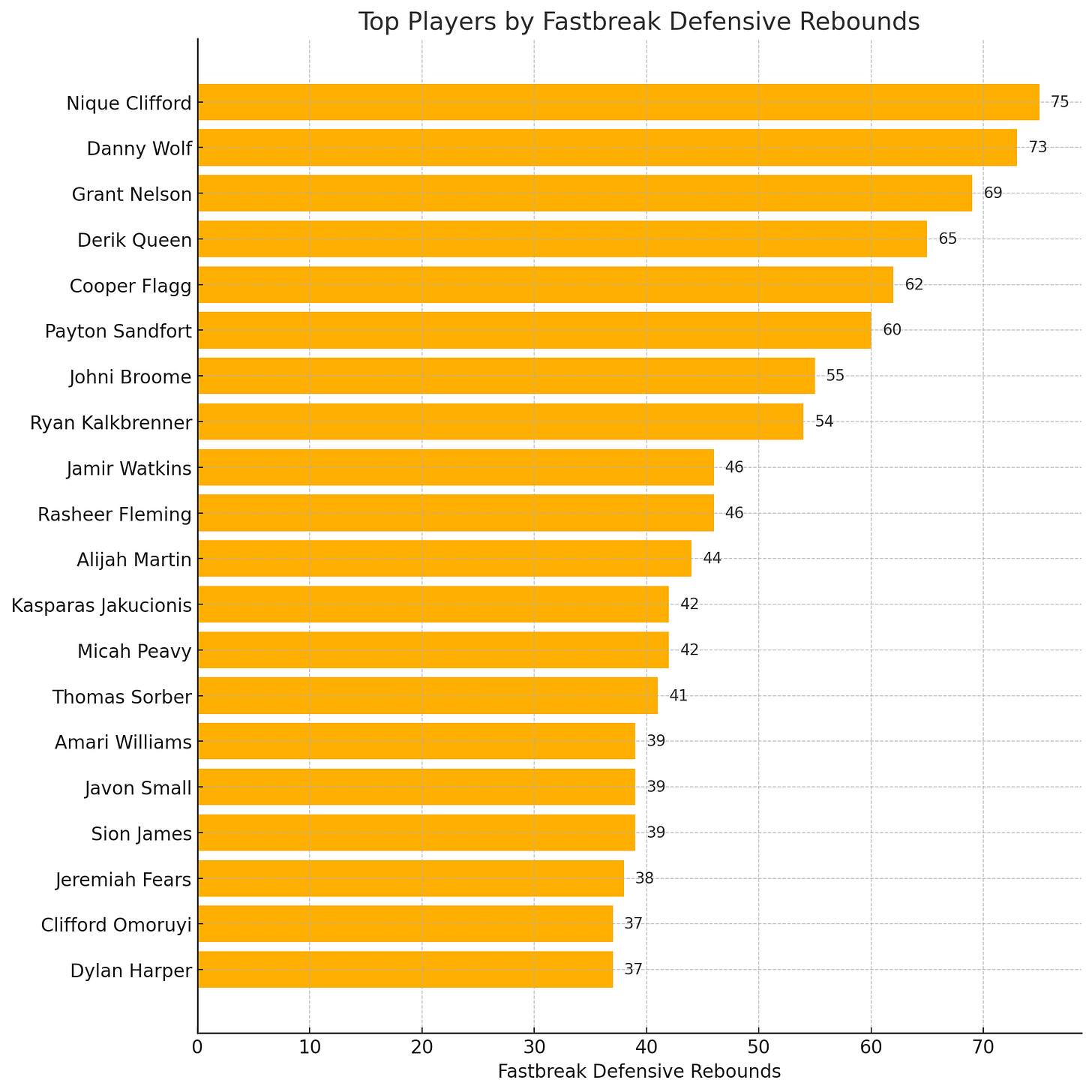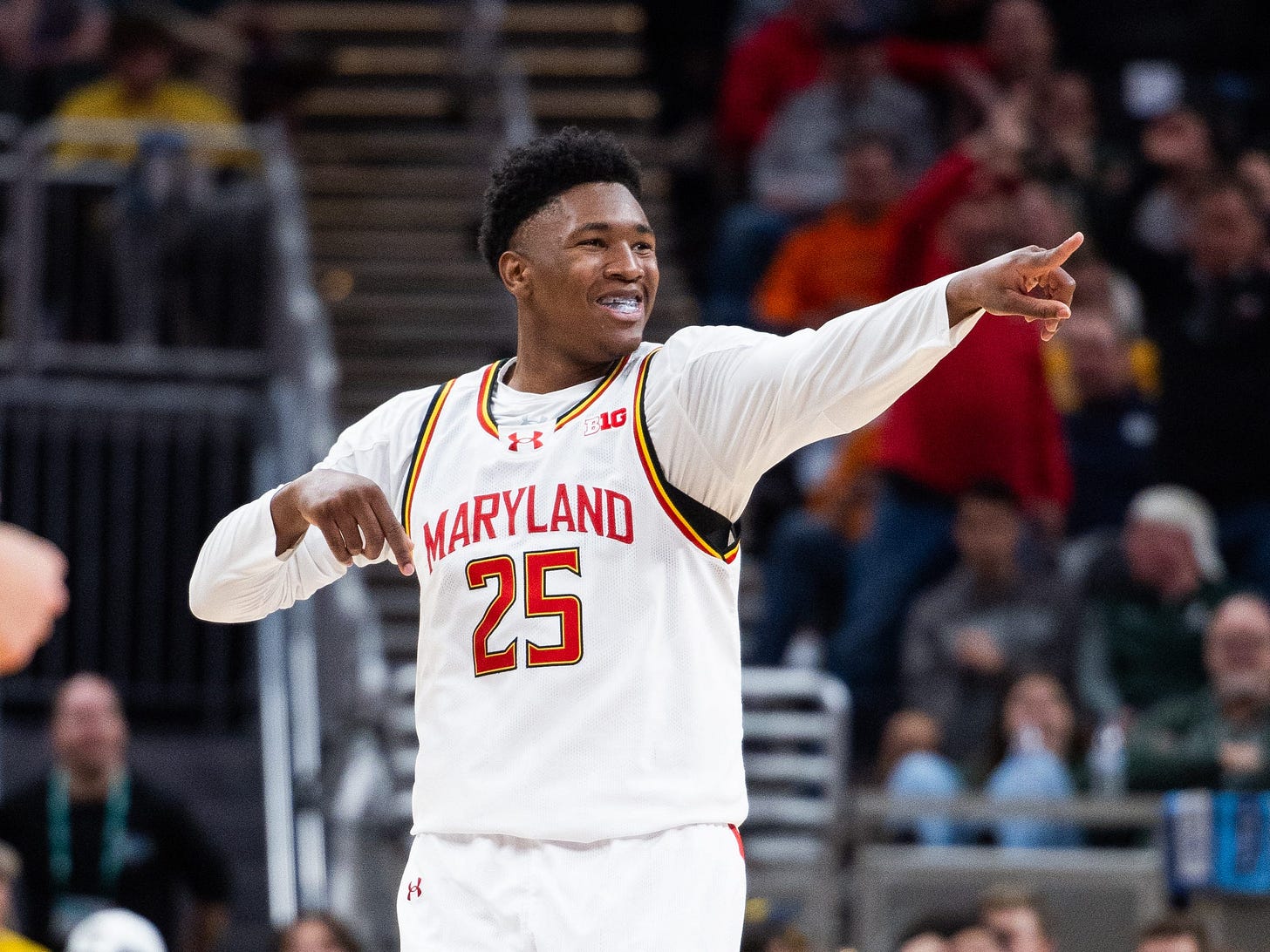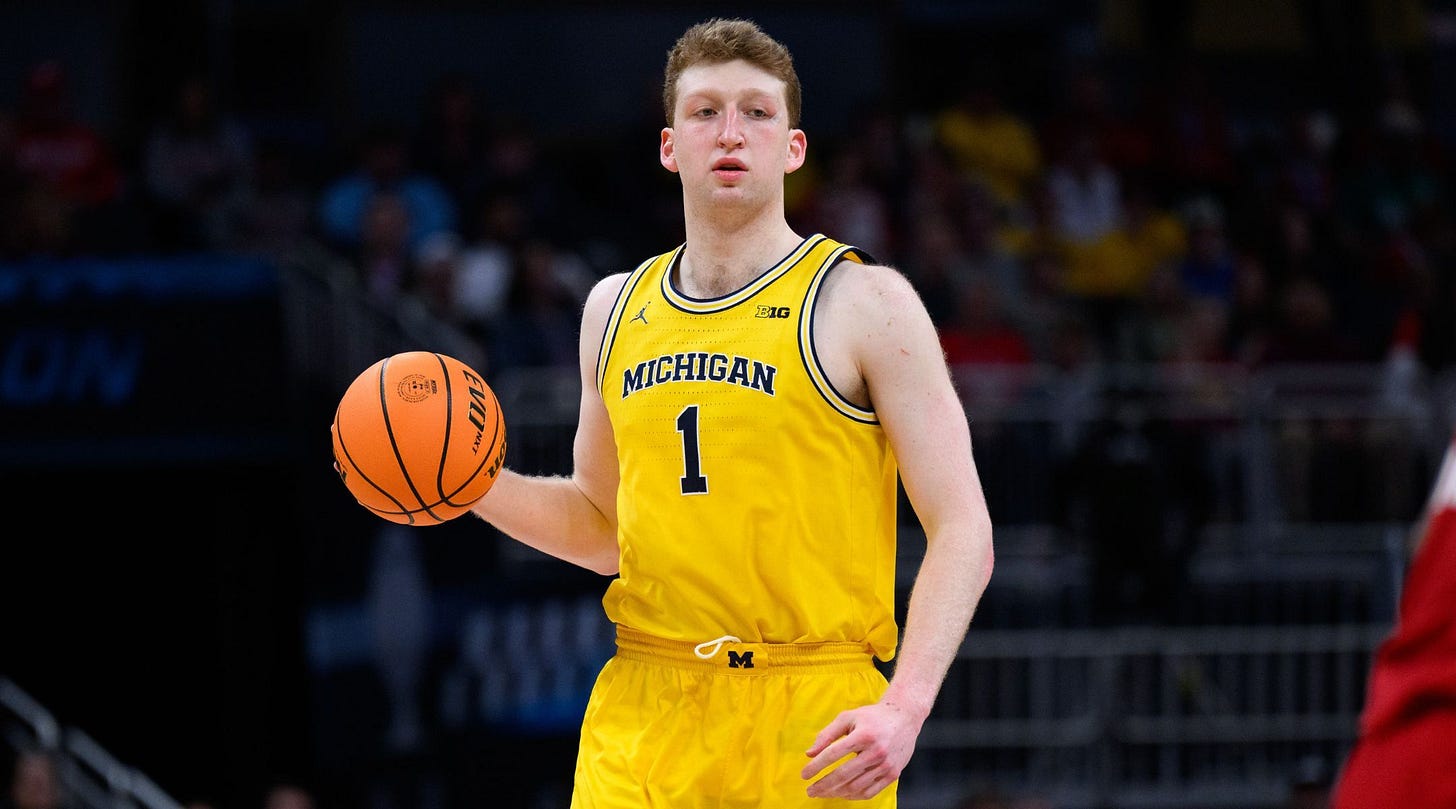Earlier in the NBA season, discourse hit an all-time low when news broke that ratings were down - it seemed, at least, like fans were tired of “modern” basketball. To me, it felt like an excuse for NBA fans (who are some of the worst fans in professional sports) to hate on the evolution of the game and the “nerds” who were responsible for it. As I started to delve into the discussion, however, I started to wonder about the topic at hand. What is “modern” basketball?
To some obnoxious fans, it means teams shoot ONLY threes and no longer go to the basket (FALSE).
To others, it means teams don’t play any defense anymore (FALSE).
To many, “modern” basketball means an optimized, technological monstrosity that apparently lacks “personality” and “flare”. It’s not uncommon for people (not just NBA fans) to fear technology - and in some cases, it’s certainly justified - but I’d argue that basketball has only widened its personality since the spacing revolution started.
I’m reminded of a segment Bill Simmons did with Derek Thompson a few months ago, and a little thread I had in response.
So yes - basketball is still weird. Numbers aren’t going to change that. I’d even argue that numbers will help us embrace weirder and weirder players who don’t fit into conventional buckets.
And that leads me into my draft analysis for today. When I started my write-ups, I thought I would go one at a time, and maybe try to cover all the players I liked. But both of these players - Queen and Wolf - are so weird, but so fun to watch, that I had to break a few rules.
Measuring in at 6'9 ¼ barefoot, 247.8 lbs with a 7'0 ½" wingspan and 9'1 ½" standing reach, Queen is an intriguing talent - one I’ve had my eye on since the McDonald’s All-American game. Despite being somewhat old for a freshman (he’s turning 21 in December), his polish offensively is still remarkable for his age. He’s a confident playmaker who can function both as a post hub and as a face up “wing” on the perimeter. While the latter archetype depends somewhat on his ability to shoot - which wasn’t there this year (20% from three) - his barreling moves to the basket and protection of the ball allowed him to function as a “spacer” in certain actions.
While some of this is a function of the college game - passes tend to happen slower and there are a lot more set plays - Queen was able to function as a “short roller” when the defense was tilted or trying to contain his spins to the basket.
The below clip demonstrates it - Queen’s elite footwork and protection of the ball keeps his defender in a sub-optimal position and he just overpowers him to the basket.
A common component of Queen’s game is his tendency to grab rebounds and go - a rare and VALUABLE trait for a big man. I analyzed this a bit in my True Rebounding Rate and Rebounding Thresholds articles, and Queen demonstrates it to a tee.
The value of a big man being able to initiate actions off rebounds has as much to do with spacing as it does to do with time. When Queen grabs a rebound, his defender has to play up on him, or else he’s liable to be charged at in transition, which would create crossmatches. Queen can use that to his advantage.
Normally not an awesome candidate for screening actions in a slow half-court offense (not a terrific shooter, screener, nor a great roller) - Queen can actually find ways to be effective in that role while bringing the ball up in transition.
The below clips show Queen throwing outlet passes, which can generate high EV shots near the basket. Better catch targets in the NBA will make this a very valuable skill.
After crunching some of the rebounding numbers, I saw Queen ranked 14th in the country at “fastbreak” defensive rebounds (rebounds that lead to a shot attempt within 7 seconds) - which puts him 4th in this draft class.
In addition, Queen’s anticipation as a playmaker is remarkable for a freshman - his extremely functional handle helps him navigate double teams well and not force dump off passes.
Overall, Queen should be able to make a living as a post hub in the NBA. He shot 67.5% at the rim this year - a product of both his soft hands and deliberate nature near the basket. His playmaking should buoy his finishing even as defenses get quicker - teams will be hesitant to send doubles given his ability to find effective passes without a connector.
The broader question remains though - how effective can his offense be? “Post hubs” seem like cavemen, almost, but there are still a decent amount left in the NBA - some of whom feel like apt comparisons for Queen. Queen plays Diaw-esque to me, and I think that’s a median offensive outcome for him.
He does have other paths, however, to effectiveness in the NBA. If he decided to commit further to weight loss and conditioning (he weighed in a bit lighter at the combine, even if it didn’t necessarily help him in his athletic testing), he could play like a point forward. Allowing him to function as an initiator would give his team added spacing - especially if he improved his shooting, which seems likely given his solid free throw percentage. He could work well as a Naz Reid-esque ball handling wing given all these other traits work out.
The greatest questions about Queen come on the other end of the floor, which I haven’t even delved into yet. Queen does flash some moments of potential - he has quick hands and is pretty strong, which can make for some disruptive possessions - but for the most part, his defensive effort is just not great.
The above possession is a good example - Queen just completely loses his man and neither relocates nor plays up on the cutter. He doesn’t make an effort to box out either, and it all makes for what should’ve been an easy rebound and transition effort for Maryland.
A lot of the clips I’ve attached are from the same games (because I ran out of storage on my Mac and Queen is a very, uh, obvious player) - but having watched a lot of Queen tape, it remains a consistent issue with him.
Some other draft analysts I know are more optimistic about Queen’s defense - slimming down might allow him to play between the gaps more - but ultimately, I don’t project him to be even a “solid” or “neutral” defender long term in the NBA. In my opinion, in the best case he’ll be hidden by a more mobile, switchable, shot blocker (Sarr would work well here).
On switches, Queen will be a target for defenses if he doesn’t improve his recovery efforts. He’s prone to clean blow-bys where he doesn’t even make an effort to get back into the play. Julian Reese certainly helped him a lot in college, but there’s no guarantee he’ll have a Julian Reese level defender or rebounder next to him in the NBA.
Overall, I think I remain slightly below consensus on Queen - I have him somewhere in the late lottery - but I wouldn’t be surprised if he turns into an All-Star. He seems a prime candidate to average big numbers and operate as the engine for some middling teams during his career if he doesn’t hit on any of his major swing skills.
Queen ranks #11 on my big board.
The other player I decided to analyze alongside Queen is Danny Wolf, the 6'10 ½ funky point-power forward from Michigan who looks like he doubles as a DJ for AEPi on Friday nights.
I’ll preface this analysis with a question:
Can an iffy shooting, poor defending big man be an effective player in the NBA?
I assume > 80% of you would say no - and yet, Wolf will more than likely be drafted in the first round.
Why?
Wolf demonstrates some of the advantages of being a tall ball handler as easily as any college player ever has. He’s adept at running pick and rolls as the ball handler (17% of his possessions came this way). “Two big” pick and rolls (pun intended) can be confusing for a defense to stop - there’s no help rim protector left in the play, which can mean an easy bucket.
In the above possession, Wolf is enabled to flow around the court because of his creative (yet loose) handle. His teammate, Vladislav Goldin, is empowered to set a screen that the defender can’t necessarily track because Wolf is so comfortable initiating actions as a ball handler in different zones on the court. As a passer, Wolf is proficient in one handed slings, which can make it easier for him to throw dump-offs and targeted passes on the move.
The second clip is more of the same, but with a jump - something that Wolf will add occasionally if he can’t find an angle through the two defenders. It’s somewhat unorthodox for a big man - but so is the rest of his game.
This clip is more subtle, but Wolf so subtly nails a very quick pass to Goldin by jumping off one foot - which confuses Gillespie (#0) into thinking that he’s going to throw the skip.
His passing is bolstered by his pace and his ability to handle off rebounds. It’s not uncommon to see Wolf blaze in transition and find some creative angles off full-court sprints.
However, it isn’t all roses for Wolf - he’s turnover prone and an iffy shooter at best.
He shot 33% from three on 62 shots, 47 of which were off the dribble. That, combined with his shooting 60% from the line doesn’t bode well for his stock. The tape revealed he can be hesitant as a scorer and impulsive as a passer, which in combination can make for some rough possessions. He has a tendency to pick up his dribble and can be goaded into taking weird shots if the passing angles aren’t there.
He is a solid scorer at the rim (60.5%) - but he doesn’t seem like a good bet as a roll-man in the NBA, when his lack of strength will be exposed a bit more. He has a Dirk fade and a decent post game (0.753 PPP), but I have significant questions on whether this is truly his upside.
The question remains on whether Wolf’s strengths will crater when defenses are able to put pressure on his first dribble - will he be at all useful as a player if he can’t be a reliable pick and roll handler?
Some of the bigger questions for Wolf remain on defense, similar to Queen. He benefited a ton from having the shot blocking Goldin behind him on most possessions. His BLK% is solid - but some of that seems a function of being a super tall wing - and not because he will really be a rim protector in the NBA. Laterally, he doesn’t seem like he can stay with most guards, even though the effort seems like it’s there.
Positionally, Wolf can get out of sorts. I tracked numerous possessions where he was lost in help coverage, playing far up and losing track of who he was originally tagging. He also can get caught up on many screens, likely a function of his lack of lateral quickness and his tendency to play up in man coverage. Some of these issues can be smoothed out by a good defensive coach.
Wolf is a super interesting bet in the early 20s of the draft even if he lacks some of the staples of both traditional and modern big men. I would liken his upside to a Kelly Olynyk or even an Alperen Sengun, at least in the way that he moves in transition and the angles he likes to slip passes through.
However, positionally, I can’t really find an angle that makes him a great bet as a long term starter. Given his deficiencies as a rim protector, shooter, and lateral defender, I am lower on him than consensus - and would not project him to be a positive player in the NBA.
He currently sits #27 on my big board.
So, would a non-weird league embrace two players who fully lean into their own weirdness? I think not.
And I like to think that neither of these two players would be considered if not for the modern innovations we have, even if they both aren’t shooters at the moment. If not for spacing, Queen’s relatively undersized dimensions for a center would not make him a great candidate as a post hub, and Wolf would never even have a shot at running a pick and roll on the baseline.
So, thanks Microsoft Excel. We owe you one.











Great post, strongly agree. I like “modern” NBA basketball but I can see how some see it as too much ball screen and threes.
Michigan mentioned 🔥